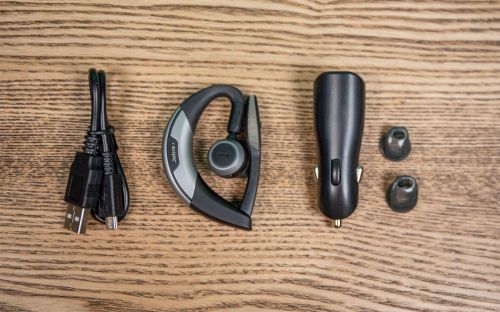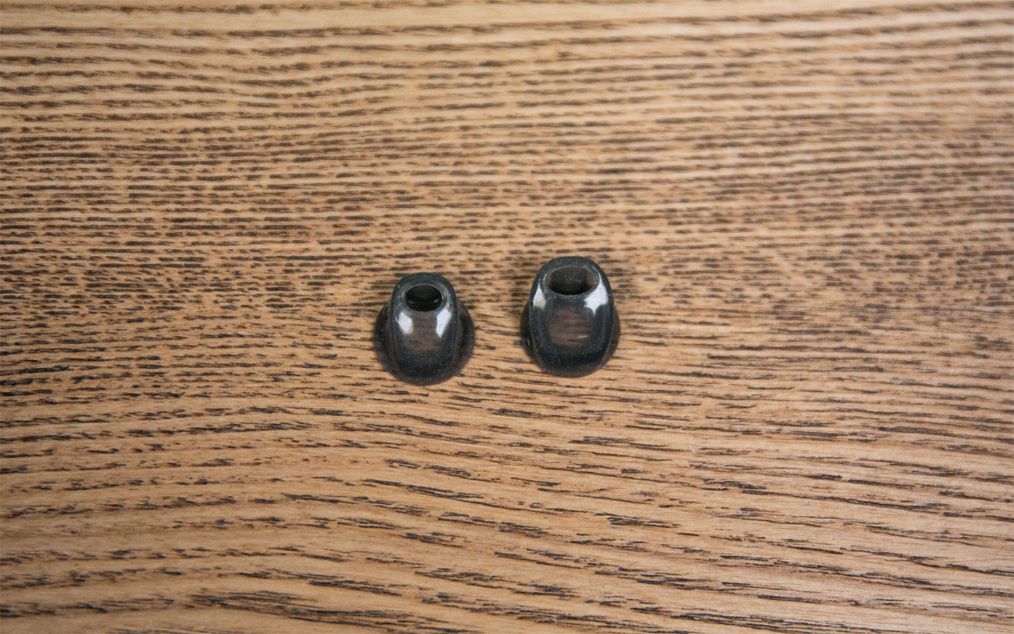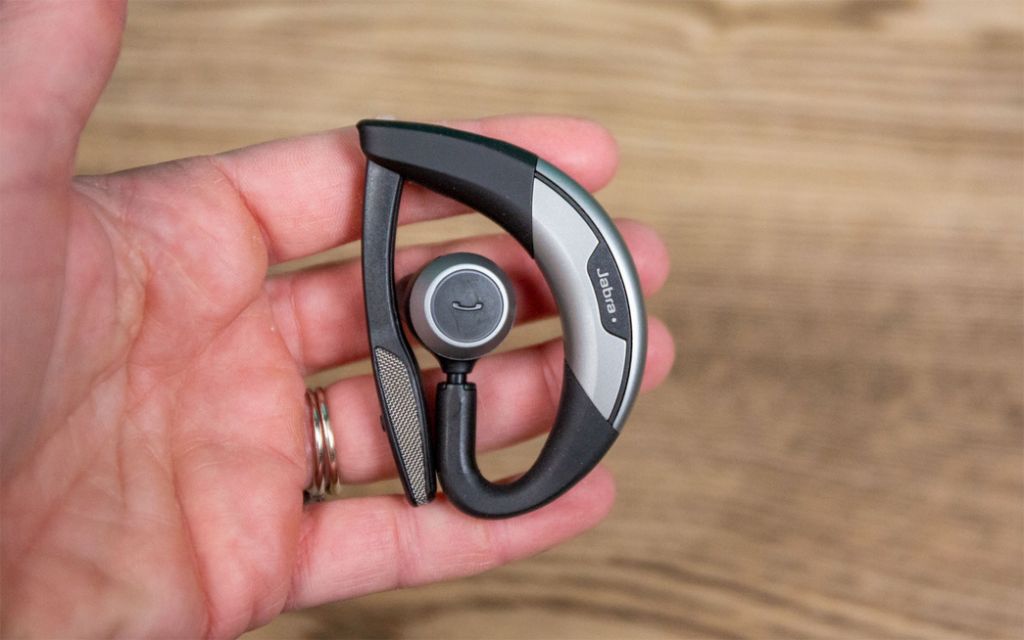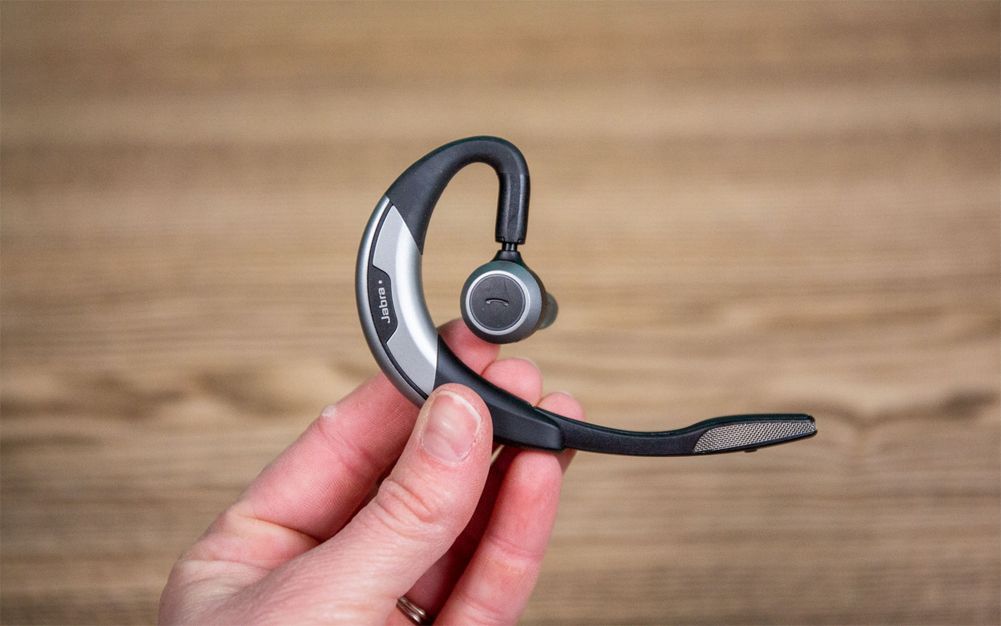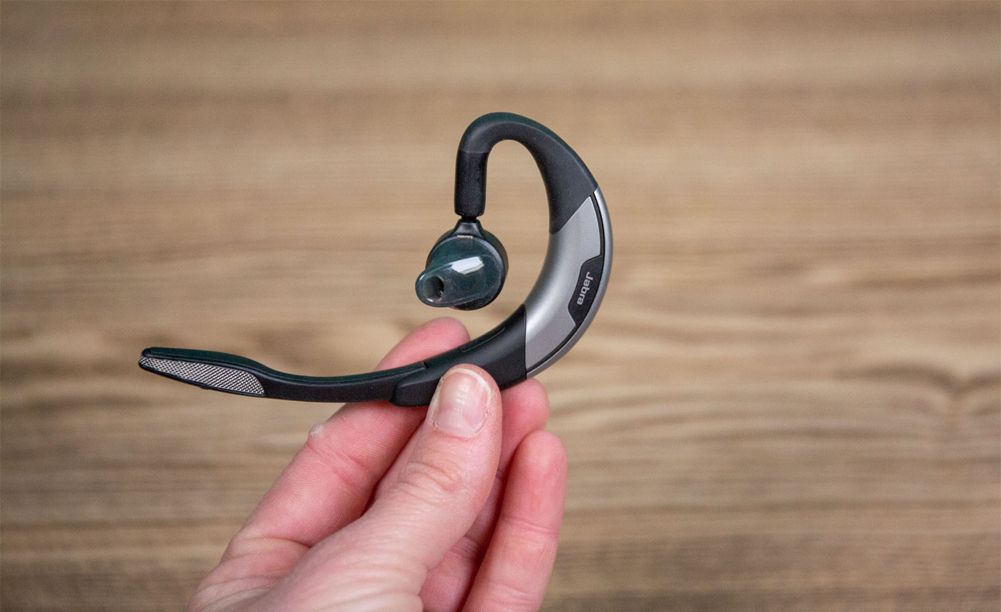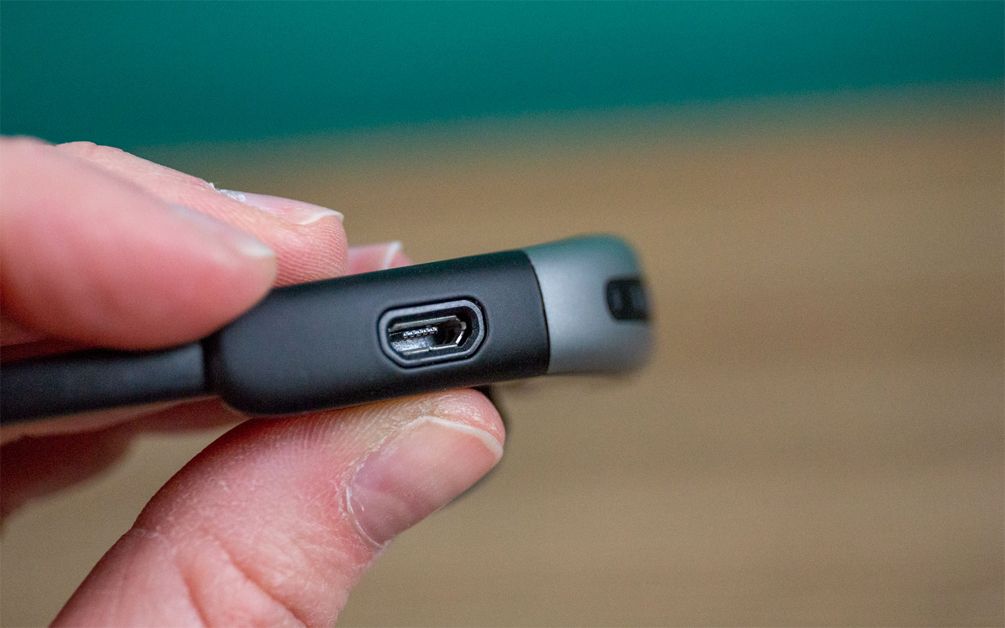The Jabra Motion is an around-the-ear-style Bluetooth headset. This style was hit or miss for our testers, some of whom didn’t mind the bulkier headset while others strongly preferred smaller products. At 18 grams, the Motion is the second heaviest product we tested, and it looks massive compared to most of its svelte competitors. Still, it’s more comfortable to wear than the Plantronics Voyager 5200, the other around-the-ear headset in our lineup. You can adjust the height of the earpiece, rotate the ear hook and swap between three sizes of ear cushions to customize your wearing experience.
Besides fit, many other things about the Motion were disappointing. The Jabra Motion gets its name from its internal motion sensor, which enables the Motion to answer calls by picking up the headset or take a power nap to conserve battery when you’re not wearing it. Unfortunately, these features worked inconsistently, particularly the answering feature, which didn’t work at all during our tests. Answering calls without the motion sensor is easy, you can pick up via the call button or voice command.
The most problematic issue with the Jabra Motion is that it sometimes fails to register when the paired phone receives a call. In several different instances during testing, we called the paired phone and received no indication that there was an incoming call. We checked to make sure the devices were paired correctly, played with settings and consulted the manual, but didn’t figure out the solution.
When the Motion did work, it worked well. Its audio quality was good, similar to the Plantronics Voyager 5200. It has a flip-down boom mic that also serves as the device’s on/off switch. The dual mic helps cancel out background noise, and there’s a small voice and mute button on the underside of the mic arm.
The headset features a call button over the speaker and a volume panel that runs across the back of the body. We found the call button placement inconvenient, as you can accidentally end calls while adjusting the earpiece. We did like that there is a dedicated volume control on the device, but we found the touch-sensitive panel a little odd. In addition to the volume control panel, the Motion has an automatic volume control that adjusts speaker volume depending on how fast you’re walking and the surrounding noise. You can also switch audio profiles in the Jabra Connect app.
Overall, the Jabra Motion is a decent headset, but we had more issues with it than any other product we tested. Its premium feature set offers much more than basic hands-free functionality, but we’re hesitant to recommend it, based on our experience.
